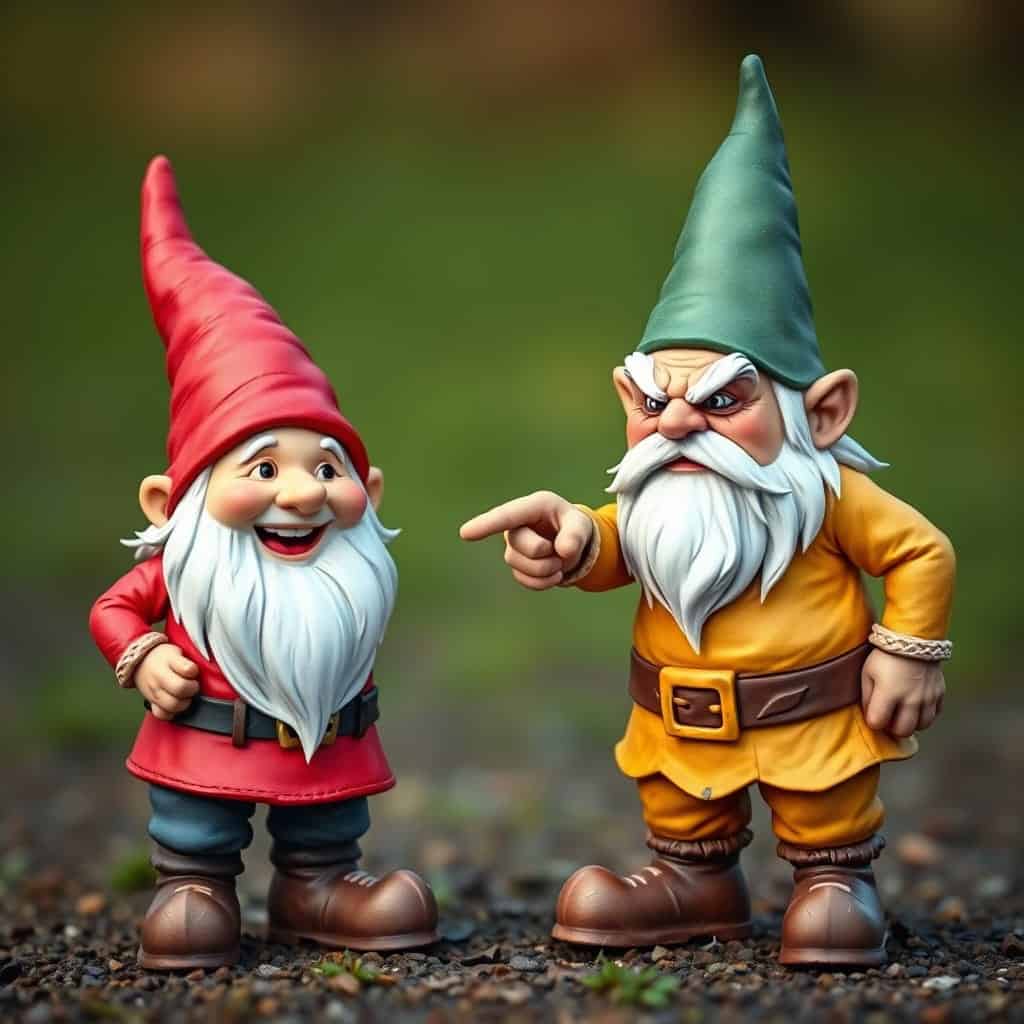
(NB Links may be affiliate links. See my disclosure here)
Are Gnomes Good or Bad?
The question of whether gnomes are good or bad is not easily answered. These enigmatic figures of folklore and fantasy occupy a fascinating middle ground, their nature often dependent on cultural context, individual interpretation, and even the specific gnome in question. Their symbolism is rich and layered, capable of conveying both positive and negative connotations.
>>> See some lovely Good Gnomes at Amazon
Gnome Meaning and Symbolism: A Complex Legacy
The term “gnome” itself stems from the Greek word “gnosis,” meaning “knowledge.” This etymological root hints at the inherent mystery surrounding these creatures. In early folklore, gnomes were often associated with the earth, dwelling within its depths and possessing an intimate knowledge of its secrets. This connection to the earth gave rise to both positive and negative interpretations.
Positive Symbolism: In many traditions, gnomes are seen as guardians of nature, protectors of the earth’s treasures, and symbols of fertility and abundance. They are often depicted as wise and helpful, assisting those who treat them with respect. Garden gnomes, for example, represent this positive aspect, their cheerful presence believed to bring good luck and prosperity to the garden. Good luck gnomes often carry symbolic items such as mushrooms, acorns, or four-leaf clovers, further enhancing their positive image.

Negative Symbolism: Conversely, gnomes have also appeared as tricksters and mischievous sprites in various mythologies. Their connection to the earth’s hidden depths can also lead to associations with the darker aspects of nature. Some folklore portrays them as capable of malevolence, playing pranks on unsuspecting humans, or even guarding hidden riches with deadly consequences for those who seek them. Bad luck gnomes, in this context, might signify warnings of potential misfortune or imbalances in one’s life.
>>> See some nasty Bad Gnomes at Amazon
Gnome Mythology and Folklore: A Wide Range of Depictions
Across different cultures and time periods, gnome depictions vary significantly. In some European folklore, gnomes are described as shy and reclusive beings, preferring the company of their own kind to that of humans. They may be depicted as artisans, skilled in mining, metalworking, or other crafts. Other stories portray them as more openly involved in human affairs, sometimes even forming alliances or engaging in conflict with people.
Regional Variations: Germanic folklore, for example, features gnomes as protectors of underground treasures, while other traditions emphasize their connection to specific locations, like forests or mountains. These regional variations highlight the diverse range of beliefs and interpretations surrounding these creatures.
Are Gnomes Good? Are Gnomes Bad? The Ambiguity of their Nature
The inherent ambiguity in gnome depictions makes it impossible to label them definitively as inherently good or bad. Their nature is fluid, depending on the narrative, cultural context, and individual perspective. A gnome might be a benevolent protector in one story and a mischievous prankster in another. This ambiguity adds to their enduring appeal and enduring mystery.

The Importance of Respect: Many stories suggest that a gnome’s disposition is largely determined by how humans treat them. Showing respect, understanding, and appreciation for their place in nature often leads to positive interactions. Ignoring or disrespecting their presence, however, may provoke negative consequences.
Good Luck Gnomes vs. Bad Luck Gnomes: A Modern Interpretation
The modern resurgence of gnome popularity, particularly in garden décor, has largely focused on the positive aspects. Garden gnomes are typically portrayed as cheerful, benign figures, representing good luck and the enchantment of nature. The concept of “bad luck gnomes” is more of a recent, perhaps tongue-in-cheek interpretation, often used in humorous contexts or to add a playful element to a story.

Conclusion: Embracing the Mystery
Ultimately, the question of whether gnomes are good or bad remains unanswered, and perhaps that is the point. Their enduring presence in folklore and fantasy reflects our fascination with the unseen world, the mysteries of nature, and the inherent duality of existence. Instead of seeking a simple answer, it is more fruitful to appreciate the rich tapestry of symbolism and storytelling woven around these enigmatic creatures. Whether seen as protectors, tricksters, or simply charming garden ornaments, gnomes continue to capture the imagination, reminding us that the world is full of wonders both seen and unseen.
Want more? Check out my Large Garden Gnomes, Rude Garden Gnomes, Football Garden Gnomes! and Female Garden Gnomes!
